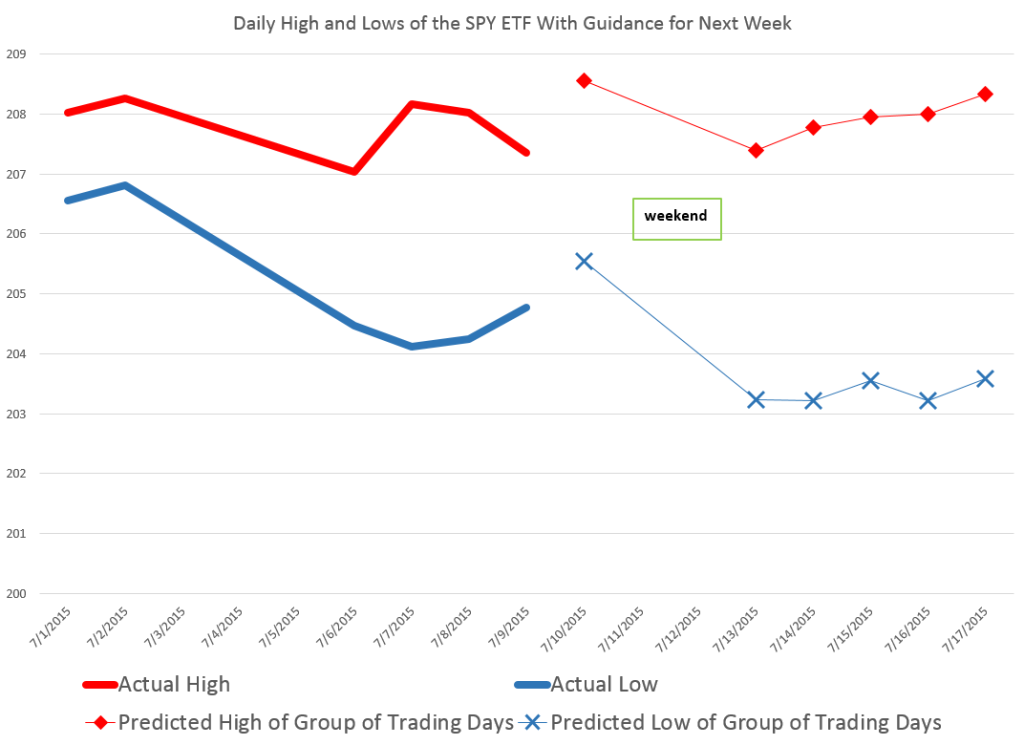Last Friday, before July 4th, I ran some numbers on the SPY exchange traded fund, looking at backcasts from the EVPA (extreme value prediction algorithm) for the Monday and Tuesday before, when Greece kept the banks closed and defaulted on its IMF payment. I also put up a ten day look forward on the EVPA predictions.
Of course, the SPY is an ETF which tracks the S&P 500.
The EVPA predicted the SPY high and low would drop at the beginning of the following week, beginning July 6, but seemed to suggest some rebound by the end of this week – that is today, July 10.
Here is a chart for today and next week with comments on interpreting the forecasts.
So the EVPA predicts the high and low over the current trading day, and aggregations of 2,3,4,.. trading days going forward.
The red diamonds in the chart map out forecasts for the high price of the SPY today, July 10, and for groups of trading days beginning today and ending Monday, July 13, and the rest of the days of next week.
Similarly, the blue crosses map out forecasts for the SPY low prices which are predicted to be reached over 1 day, the next two trading days, the next three trading days, and so forth.
Attentive readers will notice an apparent glitch in the forecasts for the high prices to come – namely that the predicted high of the next two trading days is lower than the predicted high for today – which is, of course, logically impossible.
But, hey, this is econometrics, not logic, and what we need to do is interpret the output of the models against what it is we are looking for.
In this case, a solid reduction in the predicted high of the coming two day period, compared with the prediction of today’s high signals that the high of the SPY is likely to be lower Monday than today.
This is consistent with predictions for the low today and for the next two trading days shown in blue – which indicates lower lows will be reached the second day.
Following that, the EVPA predictions for higher groupings of trading days are inconclusive, given statistical tolerances of the approach.
Note that the predictions of the high and low for today, Friday, July 10, are quite accurate, assuming these bounds have been reached by this point – two o’clock on Wall Street. In percentage error terms, the EVAP forecasts are over-forecasting 0.3% for the high and 0.2% for the low.
Again, the EVPA always keys off the opening price of the period being forecast.
I also have a version of the EVPA which forecasts ahead for the coming week, for two week periods, and so forth.
Leading up to the financial crisis of 2008 and then after the worst in October of that year, the EVPA weekly forecasts clearly highlight turning points.
Currently, weekly forecasts going up to monthly durations do not signal any clear trend in the market, but rather signal increasing volatility.

